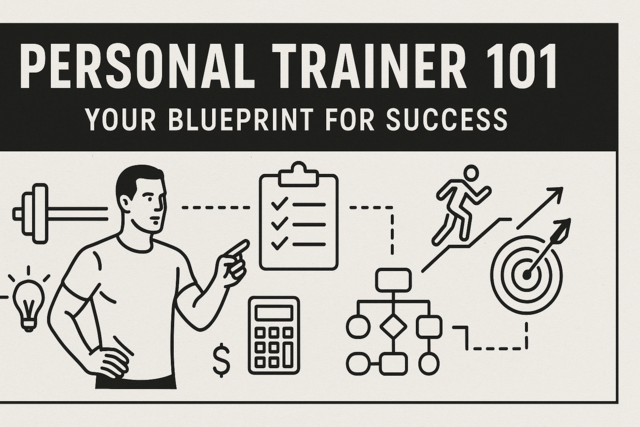When we talk about losing weight, we really mean losing fat. No one wants to lose lean muscle mass or bone. It's that wiggly jiggly stuff we all want to get rid of. But just having a nebulous goal of "I want to lose some weight" doesn't really give you a concrete goal.
Setting a realistic goal at the beginning will help you keep track of your progress along the way, and have a definite idea of how much farther you need to go. When you start to feel discouraged, you can look back at where you used to be, and see how far you've come.
Whether you are on a diet or building a business, setting reasonable, attainable goals will help you focus your efforts. If you have a chronic medical condition like hypertension, heart disease or diabetes, you might need some help from your physician to determine your weight goal. For most healthy people, the Body Mass Index we discussed previously is a helpful way to determine your healthy weight goal.
Any amount of weight over about 10 pounds is going to sound daunting. You might say to yourself, "but I don't have 20 pounds to lose," when the BMI indicates that you are that much over your weight goal. If your weight goal seems overwhelming, then be sure to set both short- and long-term goals. When setting these goals, keep in mind that a healthy pace of weight loss is about 1 to 2 pounds a week. As an example, if you determine that your long-term weight goal is to lose 50 pounds, understand that that will take approximately 25 to 50 weeks. The weight will also come off faster in the beginning, and more slowly as you progress.
|
Tracking out how long it might take to reach your goal can help keep you from getting frustrated.
It is a good idea to weigh yourself at least once a week, even after you have reached your weight goal. Some people prefer to weigh more often because it helps them detect trends in the wrong direction. Pick one time of day at which to weigh in, and stick with it. Weight tends to fluctuate throughout the day, so if you weigh at the same time, you get a fairly consistent view of what's going on.
Some people, particularly economists and engineers, seem to thrive on the use of graphs, and a graph alone is a huge motivator. If graphs don't turn you on, you certainly don't need to use one. If you like the idea, get a piece of graph paper and label it to show a range from your current weight to your goal weight. Label the number of weeks you plan for this adventure to take. Then, every week, you can plot your progress. The graph below is a good representation of a slow, healthy weight loss over a period of one year. Most people trying to lose weight would like to see a cliff-like drop off from 185 to 135, but that's neither healthy nor sustainable.
Keeping a graph may not be enjoyable for you, but if it is your kind of thing, it will give you the opportunity to look back and see how far you've come, which can really help motivate you through the tough spots.
Other important numbers to keep track of are all the numbers you measured in the beginning: your waist size, resting heart rate, body mass index, and blood pressure. Many of these numbers, especially heart rate and blood pressure, will start to change even before your weight comes anywhere close to your goal. Having proof that the changes you are making really do have positive results for your health can be a great motivator. It also helps to keep the focus on your long-term well-being, instead of just focusing on getting back to your high school weight.
Most people who have tried diets before know that the weight usually comes off fairly easily in the beginning, but at some point you hit a "plateau," or a point at which you seem stuck at a certain weight. Here's why this happens: Let's say Gina starts her diet plan weighing 180 pounds. In the beginning, she is accustomed to eating 3,000 calories a day to maintain this weight. When she starts her weight loss plan, she cuts her calorie intake down to 2750 and adds enough exercise to burn an additional 250 calories per day. This adds up to a 500-calorie reduction per day, which allows her to drop weight at a safe pace. However, at some point, her body reaches a balance point. She might find that once she reaches 165 pounds, she stops losing weight for several weeks in a row. She doesn't gain anything, but she's not losing, either.
The only way to get past a plateau in weight loss is to take another look at your diet and exercise, just like you did in the very beginning. Consider doing another food journal for a few days or a week and looking for ways to make a few more calorie cuts that add up to about another 250 calories a day. In the beginning, it may have been an easy choice: giving up the afternoon scone at the coffee shop and replacing it with carrots and hummus. As you reach plateaus and revise your diet, you might have to look more closely at portion sizes, and ways to eat more fresh fruits and veggies. Be careful not to drop your calorie intake too far, though. It can be difficult to get enough nutrients to keep your body functioning properly if you dip below 1,200 calories (women) or 1,500 calories (men).
Plateaus are also good opportunities to vary and increase the intensity of your workouts. If you started out doing a half-hour walk, you can use a plateau as an incentive to either go longer (a 45-minute walk), do multiple sessions a day (take an evening bike ride in addition to the morning walk), or make your workouts more intense (mix some running in with the walk).
This is also a good time to add a new component to your fitness routine, like weight training. Adding weights will help increase your lean muscle mass, and the muscles will help keep your metabolism fired up and burning calories more efficiently. One downside of dieting is that your natural metabolism tends to slow down in an effort to conserve, but adding lean muscle will help fight that trend. Some women worry that weight training will make them look "mannish." This is rarely a problem because it's actually very difficult, if not impossible, for women to build Schwarzenegger-like muscles. However, working with lighter weights is a good way to get tone without the risk of bulkiness.
For many people, plateaus can be the most frustrating part of the diet. But if you look at it as an opportunity to make gradual, healthy improvements in your diet and fitness plan, instead of a roadblock, then it might be an easier situation to deal with.
Once you start adjusting to eating healthier, try to expand your repertoire of recipes. Local libraries usually have a good supply of healthy cookbooks, and reliable organizations like the American Heart Association and the American Dietetic Association will have lots of good recipes to try out. Over time, make sure that a larger and larger number of your weekly meals follow the basic good nutrition guidelines.
Keep adjusting your fitness goals and activities as you go. When you first started working out, it may have been a challenge for you just to walk a mile. After a few months, walking a mile should become easy, and you will have to find new challenges to make sure your body keeps getting stronger. Consider taking up new leisure-time activities that involve movement, like dancing, hiking, bicycling, or swimming.
Local support groups like TOPS, Weight Watchers, and others really can help you meet new people who share your goals for healthy living. As you become more active, getting involved in group-based fitness organizations like hiking clubs, walking groups, or aerobics classes can also help meet new people who have healthy lifestyle goals. These active friends can help motivate you to get out of the house on days when you'd rather vegetate.
The most valuable source of support is your family. Let your spouse, children, parents and siblings know what your weight loss goals are. People who care about you will want to help, but they won't always know how. This is a great opportunity for you to tell them, in clear terms, exactly what they can do to help you stay healthy and enjoy an improved quality of life.
|
Ways your family can help support you:
o Avoid food gifts. If your sister loves to bake her award-winning brownies for you to celebrate every holiday because she knows how much you love them, then tell her how much you do love them, but you really can't eat them anymore. Instead, see if you can find a recipe for a healthy alternative treat to which you would like her to apply her magical baking skills. o Detox the holiday parties. Ask the host of family dinners if they can try offering some healthier alternatives at family feasts. If your mother's Christmas party tends to feature lots of ham, biscuits, cakes and chocolate, ask if she can provide (or if you can bring) a tasty low-fat dish. o Avoid food triggers. If you can't say no to your mother's sticky buns, ask that she avoid making them when you come over. Also provide her with an idea for something she can make that you like but won't hurt you. o Go out to eat less often or go to restaurants with healthy options. If your spouse loves to go out for dinner, this is a great chance for him or her to suggest either eating in more often, or taking the time to cook healthy meals to support you. |
At the start of your weight loss program, take a serious look at the amount of time you spend watching TV on an average day. Many people who feel like they don't have time to exercise are able to find time to watch television for several hours a week. By simply cutting back the TV time, you open up so much more time in your life for loved ones, conversations, learning new activities, and physical activity. If you just can't tear yourself away from American Idol, then it may be worth the investment to get a second-hand treadmill to put in front of the tube so that you can walk and watch at the same time.
Another barrier to activity is Internet surfing. There is a clear difference between using the Internet or computer for work or school, and simply wasting time doing nothing. If you have ever sat down for two minutes "just to check email" and stood up four hours later, not quite sure exactly what you actually did, then the time may have come for an Internet intervention. One solution to this problem is to set clear limits on the amount of time you use for surfing. When you sit down to check your email, make a point of noticing what time it is. Give yourself a time limit on activities you need to do. If you think checking your email should only take five minutes, then allow yourself no more than 15 for checking email, replying to messages, and following up on questions. Keep an eye on the clock. It may be helpful if you have something specific you need to do at the end of that time -- for example, check it when you only have 15 minutes before you need to leave for work, or before the kids get off the bus. Then make sure you stop when you said you would.
Television and Internet are passive, and for most of us, almost inescapable. You have to really try to get away from them, but if you do make the effort, you might be surprised how much more time you have in your day, and how much more you can get done.






























